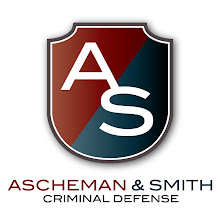I recently stumbled upon an interesting post by Matthew Ruff, a criminal defense lawyer in California. While working with the prosecution I discovered officers would look for many of the signs (listed below) Mr. Ruff indicates.
Mr. Ruff cites research by the National Highway Transportation Safety Administration for identified the following indicators of drunk driving, in descending order of probability that the driver is intoxicated, suggesting a high probability that a driver exhibiting the behavior is intoxicated:
Mr. Ruff cites research by the National Highway Transportation Safety Administration for identified the following indicators of drunk driving, in descending order of probability that the driver is intoxicated, suggesting a high probability that a driver exhibiting the behavior is intoxicated:
- Turning the car with a wide radius
- Straddling the center. (I saw this answer from officers many times)
- Appearing to be drunk or visibly intoxicated (e.g. gripping the steering wheel tightly, driving with one's face close to the windshield, or staring straight ahead with eyes fixed - imagine a 105 year-old grandmother)
- Almost striking a fixed roadside object or vehicle
- Weaving within or outside a lane of travel
- Driving the vehicle somewhere other than the designated roadway (e.g. on the shoulder or straight through a turn-only lane)
- Swerving in a sudden fashion
- Driving at a Slow speed (10 m.p.h. or more below the speed limit)
- Stopping the car in the lane without cause
- Following another vehicle too closely, improper or unsafe distance
- Drifting in and out of the lane
- Tires traveling on center or lane marker
- Braking suddenly or erratically
- Driving into opposing or crossing traffic
- Signaling a turn inconsistent with driving actions
- Stopping inappropriately other than in lane
- Slow response to green lights or other traffic signals
- Turning abruptly or illegally, in violation of traffic laws
- Accelerating or decelerating rapidly
- Headlights off at night, (for example when leaving a bar)
- Difficulty with vehicle controls;
- Difficulty exiting vehicle;
- Fumbling with a drivers license or registration;
- Repeating questions or comments to the officer;
- Swaying, unsteadiness or balance problems while speaking to the police officer;
- Leaning on the vehicle (or other object);
- Slurred, thick or drunken speech;
- Slowness in responding to questions, or asking officer to repeat questions;
- Providing incorrect information or changing answers;
- Odor of an alcoholic beverage.
Keep in mind that officers can use other means to stop you. One young lady was unfortunate enough to have a crystal hanging from her rear view mirror, she was stopped and arrested for a DUI. Another young lady had her tail light smashed while she was in the bar, she was stopped and arrested for a DUI.
Thank you,
Landon J. Ascheman, Esq.

No comments:
Post a Comment